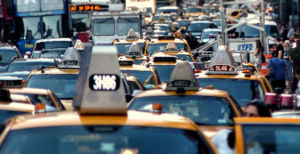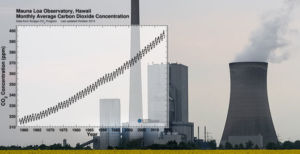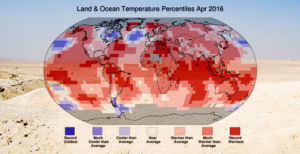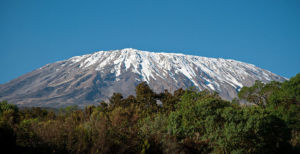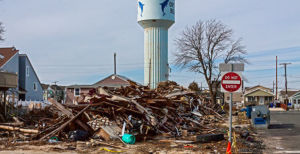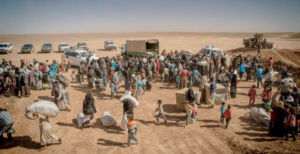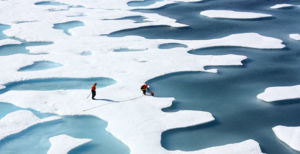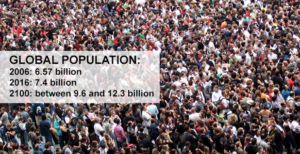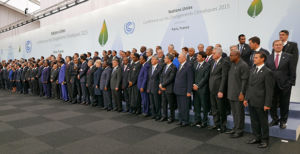As the Republican Convention starts tonight and will culminate with the nomination of two blatant climate change deniers, it seems like a good time to review what has happened in the past 10 years to our planet compared to the predictions in Al Gore’s movie from 2006.
Of course, no predictions are perfect. We wouldn’t want them to be as this would most likely mean that our ability to learn how our planetary weather systems work had been perfect back then and that we had been unable to learn anything since then. As we have observed how our climate is evolving we have become better able to understand the relation between cause and effect.
So, while much of what was expected 10 years ago has generally moved in the direction anticipated it has not been perfect. But one thing is clear…the predictions are reasonably accurate and our need to institute strong and deliberate actions to avoid the worst consequences of a much warmer planet are now becoming perfectly clear to world leaders around the globe.
Our election coming up in November will have a significant impact on the direction of the planetary climate. Will the US be a leader in innovation and change? Or will we stick our head in the sand and retreat from leadership on Climate?
Elections matter….
10 ways climate science has advanced since ‘An Inconvenient Truth’
Gayathri Vaidyanathan, E&E reporter
Published: Tuesday, May 24, 2016
The aughts were an inconvenient time for environmentalism. President George W. Bush declared the Kyoto Protocol, the first international treaty meant to address climate change, dead. Environmentalists charged widespread political interference in climate change science conducted at federal agencies. Most people had not heard of global warming.
Then former Vice President Al Gore’s “An Inconvenient Truth” landed with a thud on the public’s consciousness. It grossed $24 million, won two Academy Awards and earned Gore the Nobel Peace Prize.
With the 10-year anniversary of “An Inconvenient Truth” coming up this week, ClimateWirerewatched the film to see if the science still held up and found a number of its predictions have since come true. In some cases, the reality is even worse than the forecasts. And a few times, Gore got it wrong.
Here, a decade after its release, are 10 way
The age of humans
2006: Most people were unaware that humans are capable of changing the planet’s fate. In 2001, the Intergovernmental Panel on Climate Change, the United Nations’ premier climate body, was still lukewarm on the extent of human direction of the climate system. “The Earth’s climate system has demonstrably changed on both global and regional scales since the pre-industrial era, with some of these changes attributable to human activities,” it stated.
2016: Scientists say the planet is now in the Anthropocene, a new epoch where humans have surpassed nature as the primary shapers of the planet. The IPCC definitively said in 2013 that humans are the directors of Earth’s story. “It is extremely likely that human influence has been the dominant cause of the observed warming since the mid-20th century,” it stated.
Carbon rising
2006: Levels of carbon dioxide, a potent greenhouse gas, have been increasing since the Industrial Revolution. In 1958, when scientist Charles Keeling made the first measurement at the Mauna Loa Observatory in Hawaii, carbon levels were 315 parts per million. In 2006, levels were 381 ppm.
2016: CO2 levels hit 400 ppm in March 2015, a threshold that was last breached during the Pliocene Epoch 3 million years ago. Back then, Ellesmere Island in the Canadian Arctic had forests growing on it. Global CO2 levels are currently hovering at 404 ppm, and the rate of CO2 growth is 3 ppm per year — the fastest ever recorded. Scientists say CO2 levels have to be less than 450 ppm by 2100 if dangerous climate change is to be avoided.
It’s getting hotter in here
2006: Global temperatures were 0.6 degree Celsius above the 20th-century average, and the hottest 10 years had all happened since 1990.
2016: Last year, global average temperatures hit 1 degree Celsius above the 20th-century average, according to the U.K. Met Office. The threshold is psychologically important, as nations have agreed to limit warming to below 2 degrees Celsius by 2100. The mercury continues to rise; 2015 was the hottest year on record, aided by warming and an El Niño, and it likely that 2016 will outmatch it, according to federal weather forecasters. The hottest 10 years, except 1998, have all happened since 2000.
Kilimanjaro’s ice
2006: Mount Kilimanjaro, in Tanzania, was called the spotted owl of climate change, according to The New York Times. Between 1989 and 2007, Kilimanjaro’s ice cover retreated by 20 percent. Gore predicted that its glaciers would be completely lost by 2016, a fate that would be mirrored on ice-covered mountains from South America to the Alps.
2016: Mount Kilimanjaro’s glaciers continue to retreat, said Douglas Hardy, a glaciologist at the University of Massachusetts, Amherst, who has studied the mountain for the past 14 years. In 2011, ice covered 1.76 square kilometers, a 85 percent decline since 1912. But Kilimanjaro’s particular fate is not tied to rising air temperatures, Hardy said. Rather, its glaciers are sensitive to changes in snowfall, which some scientists think are affected by the Indian Ocean, which is warmer due to global warming, he said. “We’ve not yet managed to come up with a definitive link, but in most people’s opinion, the [Indian Ocean] warming is changing circulation patterns, which govern the delivery of moisture to Kilimanjaro,” he said.
For almost every other mountain glacier from Peru to the Alps, scientists can show a direct link between rising temperatures and retreat. That makes the choice of Kilimanjaro as the poster child of climate change rather ironic. Hardy faults Ernest Hemingway, author of “The Snows of Kilimanjaro,” for it.
Stormy outlook
2006: The previous year was the busiest Atlantic hurricane season on record. Some 28 storms formed, and 15 were hurricanes. Seven were “major” — Category 3 and above — including Katrina, Emily, Rita and Wilma. “The consequences were so horrendous, there are no words to describe it,” Gore said in the documentary.
2016: Hurricane Wilma was the last major hurricane to hit the U.S. Atlantic coast, according to the National Oceanic and Atmospheric Administration. Early forecasts suggest the hurricane drought will end this year.
The links between climate change and hurricanes are difficult to decipher because of sparse data, but it appears that the number of hurricanes making landfall in the United States has not significantly changed. Climate models peering into the future suggest that hurricanes will be less frequent but more intense in a warmer world.
Mounting conflicts
2006: Genocide in Darfur, Sudan, reached a peak in 2003. Hundreds of thousands died, and millions were displaced. The U.N. Environment Programme linked the conflict to drought, saying that “complex but clear linkages exist between the environmental problems and the ongoing conflict.”
2016: The ongoing Syrian conflict has killed 470,000 people and displaced millions. It, too, was preceded by an unusually severe drought between 2006 and 2010. Millions of farmers migrated to urban centers, the staging grounds for the civil conflict. The drought would have been highly unlikely without climate change, according to one study (ClimateWire, March 3, 2015).
Scientists are divided on whether heat waves and droughts can be linked to civil conflict, said Andrew Solow, a senior scientist at the Woods Hole Oceanographic Institution. Even if there is a role for climate change, he argued, there are other factors — poverty, corruption, a lack of civil institutions — that are much more important contributors to conflict. “Arguments about climate may distract us from taking practical steps in these areas that would reduce human suffering,” he said.
Arctic anomalies
2006: The previous year shattered records in the Arctic. Spring melt arrived 17 days early, and the sea ice cap shrank by 500,000 square miles, twice the area of Texas. Sea ice covered 2.06 million square miles. The Arctic is considered a harbinger of climate change, since it is warming at twice the rate of the lower latitudes.
2016: Sea ice covered 1.70 million square miles in 2015, the fourth-lowest extent on record. The only years to have had even less ice were 2007, 2011 and 2012. Nine out of 10 years with the lowest sea ice extent have all happened since “An Inconvenient Truth.” This year has been spectacularly warm atop the world, with temperatures 4 to 11 degrees Fahrenheit above normal.
Rising sea levels
2006: A Rhode Island-sized ice shelf named Larsen-B in Antarctica partially collapsed over 35 days in 2002. It was the first time scientists had witnessed such an event in real time. Unlike in the Arctic, ice sheets in Antarctica and Greenland ccur on land, and loss of the continental ice raises global sea levels.
2016: Ice melt on Greenland and Antarctica has accelerated since 1992 due to climate change and added 11.1 millimeters to global sea levels. Scientists warn that Antarctic glaciers are heading toward “irreversible” collapse. If humans keep emitting as they are, Antarctic melt alone could raise sea levels by 3 feet by 2100 (ClimateWire, March 31).
A demographic challenge
2006: There were 6.5 billion people on the planet.
2016: The global population is 7.4 billion. New studies have shown that the population will continue to grow this century, primarily in Africa. By 2100, there could be 9.6 billion to 12.3 billion people living on the planet, stressing the environment, economy, health care systems, governments and society.
Global action
2006: The United States rejected the Kyoto Protocol, the first global climate treaty, in 2001, saying that developing nations needed to get on board. The United States emitted 7,316 million metric tons of CO2 equivalents in 2006 and was the top emitter in the world.
2016: Propelled by an onshore oil and gas boom, many power plants in the United States have switched to burning natural gas instead of coal. Carbon emissions from the energy sector fell by 12 percent below 2005 levels in 2015. The nation’s economy grew by 15 percent over the same stretch (ClimateWire, May 10). The United States is the second-largest absolute emitter of CO2.
In December 2015, all nations — including the United States, China and India — signed a historic climate accord in Paris and agreed to limit warming to below 2 degrees Celsius by 2100. Meanwhile, environmental groups in the United States are leading #keepitintheground, a movement to end fossil fuel use, and major organizations, including churches, universities and the Rockefeller Brothers Fund, have divested from fossil fuel stocks.


